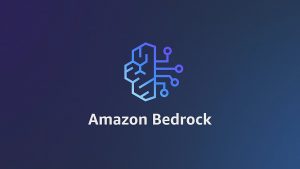“Hardware Independence is in our DNA” : NetApp Defines its Software-Led Storage Play
![]() There’s a Renaissance going on in IT storage right now, transforming an old, clunky system into something that’s not only more agile, but smarter, too. Software is leading the charge, making new and existing hardware systems more efficient. At the heart of this revolution is a bubbling rivalry over who will lead the emerging market of software-led storage (or software-defined storage), as newcomers disrupt a legacy market and traditional vendors shift their strategies to appeal to a service-based model.
There’s a Renaissance going on in IT storage right now, transforming an old, clunky system into something that’s not only more agile, but smarter, too. Software is leading the charge, making new and existing hardware systems more efficient. At the heart of this revolution is a bubbling rivalry over who will lead the emerging market of software-led storage (or software-defined storage), as newcomers disrupt a legacy market and traditional vendors shift their strategies to appeal to a service-based model.
NetApp is among those leading the charge in software-led storage, putting its faith in clustered storage technology with its ONTAP solution. It’s an initiative NetApp’s been building out for a few years in anticipation of an evolving datacenter, though rivals have been working behind the scenes as well. This week brought news of EMC’s own software-led storage solutions, announcing the launch of ViPR at its annual EMC World event this week.
We already heard NetApp’s initial reaction to ViPR in a statement yesterday, and the following Q&A offers a deeper look into NetApp’s portfolio and strategy around software-led storage.
What is software-defined storage (SDS), and what value can it bring to the enterprise market?
The current business environment requires CIOs to transform their roles from “guardians of the data center” to “brokers of services.” This shift to IT as a service requires dynamic approaches to data center design. The customers I speak with are looking to harness the potential of software to usher in this new era of IT and, ultimately, business agility.
The software-defined data center (SDDC) is a response to this change and part of the evolution from server virtualization to data center virtualization. In this model, data center resources, specifically compute, network, storage, and security, are defined in software in order to free resources from their hardware boundaries and enable such service-level agility.
As a pillar in the SDDC stack, software-defined storage (SDS) pools hardware storage resources and allows them to be programmatically defined in software. This design provides the means for storage services to be provisioned and consumed based on policies and deployed on a wide range of hardware, from vendor optimized to commodity to cloud.
At NetApp, we see SDS as a positive step for our customers, and a trend that plays well to our technology strengths. For example, with NetApp clustered Data ONTAP we are helping customers today to define resource characteristics in software, provision storage resources based on policy and service levels, and deploy across multivendor environments.
Why is SDS the “evolution of storage”? Isn’t this just another phase? Why is it so important?
To realize the agility promise of software-defined data centers, the storage infrastructure must be architected in a way that separates software management of storage resources from the underlying pooled hardware resources. We’ve achieved this with clustered Data ONTAP, and we’re doing for storage what VMware did for services. We’re enabling the definition in software of a “storage virtual machine,” which can be moved across clusters to keep applications and operations running nonstop, providing organizations with unprecedented agility and reliability.
Storage sits at the foundation of the data center, and its use must become more agile in order for IT departments to advance their service delivery capability. Storage arrays are fundamentally different from servers, because they provide a set of features and functions that are designed for and locked to their hardware. This means that storage can no longer be siloed. It must be viewed as a pooled resource, and therefore standardization in the management and delivery of storage services is required.
NetApp has talked a lot about clustered storage, and also about IT agility. How does this relate to SDS?
CIOs need IT to move ever faster to keep pace with the changing needs of business. To achieve this speed requires an infrastructure that works without interruption, keeps costs under control, and delivers new services, projects, and capacity instantly. That’s IT agility, and delivering it is at the core of what technologies like clustered Data ONTAP deliver today, and what SDS solutions promise in the future.
![]() Clustered Data ONTAP enables companies to pool storage resources into clusters and to seamlessly move data sets across clusters to keep applications and operations running nonstop. This separation of software management from the underlying hardware is at the heart of SDS, and it’s why we are excited about the industry moving in our direction.
Clustered Data ONTAP enables companies to pool storage resources into clusters and to seamlessly move data sets across clusters to keep applications and operations running nonstop. This separation of software management from the underlying hardware is at the heart of SDS, and it’s why we are excited about the industry moving in our direction.
For software-defined storage to be truly dynamic, it’s necessary to abstract data access and data services from pooled hardware resources. What impact does this have on how IT can transform business?
By abstracting data services from the underlying storage hardware, organizations receive three immediate benefits.
1. Agility. The ability to provide on-demand storage services, defined by service level, provisioned based on policy, and consumed by app owners and development teams through third-party integrations and programmable APIs.
2. Simplicity. The elimination of data migration. The data is now in a transportable container that is always online and available during IT cycles, including hardware maintenance and upgrades.
3. Efficiency. Storage services aligned to the requirements of an application over its lifecycle. Whether an application originates to support a department and grows to support a global organization or the role of an existing application is diminishing, storage services can be adjusted without downtime or reconfiguration of the application or the servers it resides on.
You claim that hardware independence and the best set of data services is precisely how Data ONTAP became the #1 most deployed storage operating system. Can you elaborate?
Hardware independence is in our DNA. By enabling hardware independence, Data ONTAP has become the #1 most deployed storage operating system.
NetApp has long viewed software as the delivery vehicle of storage functionality (AKA the control plane) and hardware as a means to scale storage performance and capacity (AKA the data plane). We have been shipping Data ONTAP on multiple hardware platforms for more than a decade. These platforms varied in capacity and performance as much as architecture, including Intel, AMD, MIPS, and DEC Alpha processors. Today, Data ONTAP is available in our optimized FAS arrays to third-party storage arrays enabled by NetApp V-Series systems, deployed on servers with Data ONTAP Edge, and consumed in the cloud with NetApp Private Storage for Amazon Web Services.
A message from John Furrier, co-founder of SiliconANGLE:
Your vote of support is important to us and it helps us keep the content FREE.
One click below supports our mission to provide free, deep, and relevant content.
Join our community on YouTube
Join the community that includes more than 15,000 #CubeAlumni experts, including Amazon.com CEO Andy Jassy, Dell Technologies founder and CEO Michael Dell, Intel CEO Pat Gelsinger, and many more luminaries and experts.
THANK YOU













